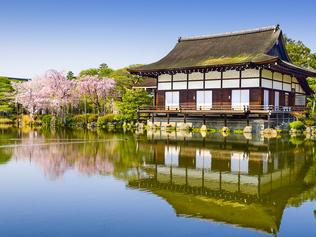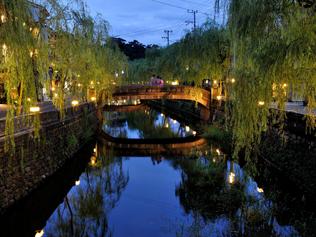Inn residence
Traditional lodgings offer a taste of the past
Traditional lodgings offer a taste of the past
THERE is an old Japanese ballad that likens a hotel to a plum tree and compares guests with nightingales plumply sheltering, protected by its branches. Such is the case in Kyoto at Tawaraya, a ryokan that has been in the same family since the early 1700s.
Readers of the Arthur Golden bestseller Memoir of a Geisha will be familiar with the secretive landscape of a traditional Kyoto house. Rice-paper shoji doors slide swiftly and noiselessly. Kimono-clad maidens swish along attentively polished corridors in soft slippers. There's the mown-grass aroma of fresh tatami matting. But far from being the stuff of memory, such houses still exist in Japan's cultural stronghold of Kyoto, that wonderful reliquary city so logically twinned with Florence.
Tawaraya is the oldest of Kyoto's inns, and its 18 guestrooms either overlook or open on to dainty gardens of pebbles, moss and stone lanterns. In typical ryokan style there's no lobby, communal areas or dining room. Guests are ushered into individual suites of connected rooms and served meals of many courses by maids who also draw sizzling baths and lay down futon bedding on the matted floor.
Ryokan came into being during feudal times when daimyo, or warlords, would be required to travel with their entourage to Edo (present-day Tokyo) to attend the imperial court.
Then, as now, the inns were wooden dwellings of one or two storeys with no more than about 20 rooms. Privacy was paramount and no areas were incorporated for mingling with other guests.
At Tawaraya, nothing much has changed since the days of daimyo, save for the addition to guestrooms of televisions and phones (coyly hidden under hand-embroidered cloths) and discreet mini-bars. Meals of banquet-like progression appear as still-life paintings, so artfully presented it seems barbaric to eat them. Fresh fruit may be arranged with the symmetry of a geisha's fluted fan or two prawns of identical size, their feelers in salute, come draped across a miniature Mt Fuji fashioned from rock salt.
It's all a bit like assuming the role of shogun in a samurai epic but, as atmospheric and family scaled as it is, a ryokan stay can be too regimented for many Western guests.
For instance, if the futon hasn't been made up, there's nowhere to lie for an afternoon nap; the maid is likely to come in and out at will (with the softest sumimasen before sliding the door) and the schedule is strict: check-in late afternoon, dinner by 7 at the latest, breakfast by 8 and check-out at 10. And it's essential to like Japanese food. Guidebook author Beth Reiber says she has been served grilled grasshopper at a ryokan. Her verdict? Well, it is crunchy.
This article has previously appeared in Travel & Indulgence.



